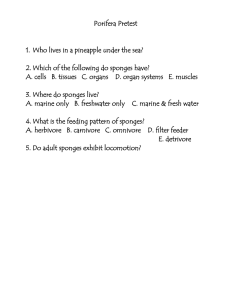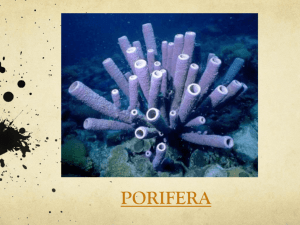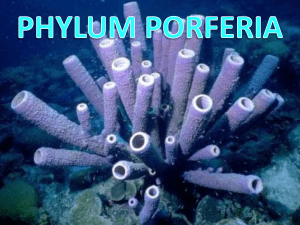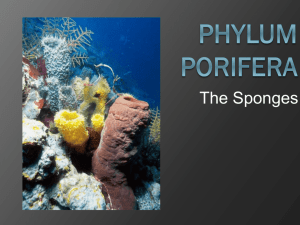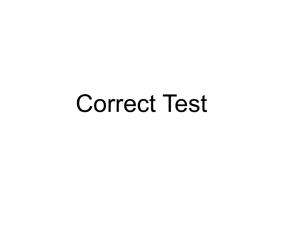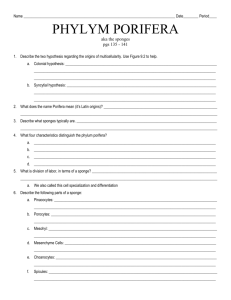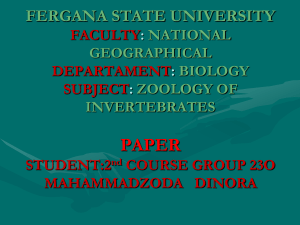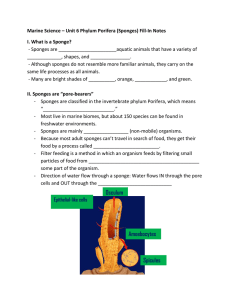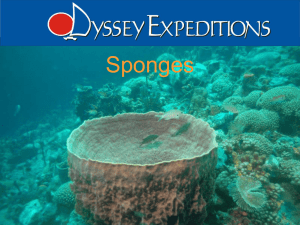File
advertisement
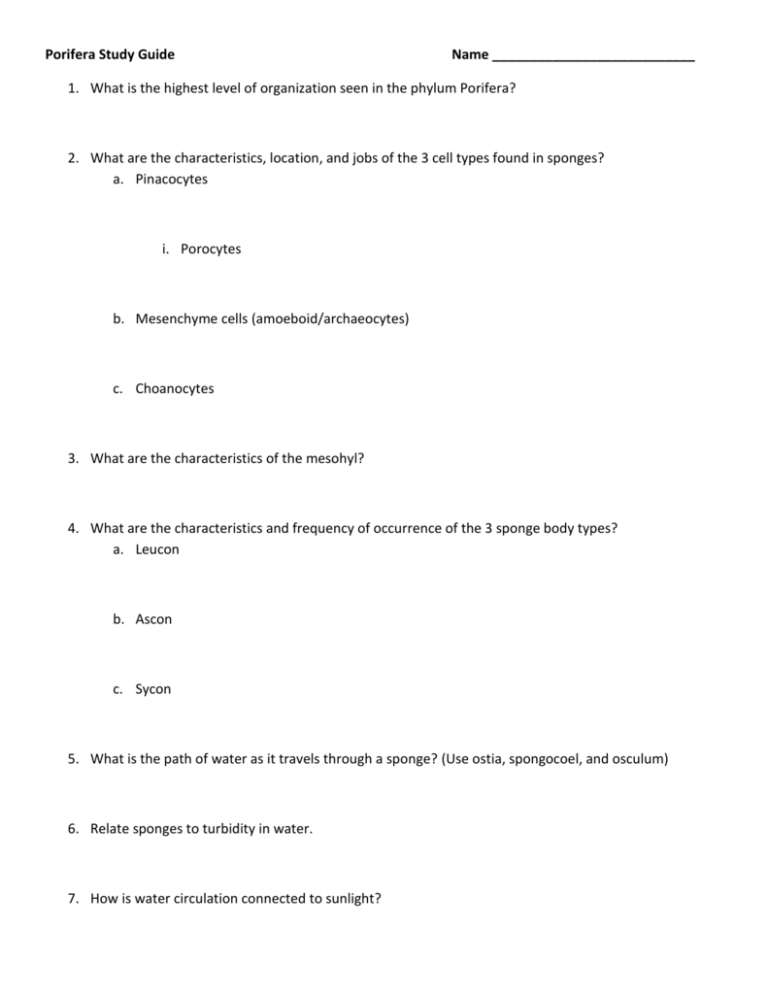
Porifera Study Guide Name ___________________________ 1. What is the highest level of organization seen in the phylum Porifera? 2. What are the characteristics, location, and jobs of the 3 cell types found in sponges? a. Pinacocytes i. Porocytes b. Mesenchyme cells (amoeboid/archaeocytes) c. Choanocytes 3. What are the characteristics of the mesohyl? 4. What are the characteristics and frequency of occurrence of the 3 sponge body types? a. Leucon b. Ascon c. Sycon 5. What is the path of water as it travels through a sponge? (Use ostia, spongocoel, and osculum) 6. Relate sponges to turbidity in water. 7. How is water circulation connected to sunlight? 8. How do sponges obtain food? (more than just “filter feeding”) 9. How do sponges respond to their environment without nerve cells? 10. What role does diffusion play in sponges? 11. What is the meaning of the term monoecious? 12. How do sponges avoid self fertilization? 13. How are eggs and sperm formed in sponges? 14. How does the movement of larva differ from the movement of adults? (Use sessile and motile) 15. How does asexual reproduction occur in sponges? 16. How do gemmules achieve their goal? 17. Which class of sponges was historically used commercially? How were they prepared for use? 18. What are the characteristics of the 2 types of skeleton in sponges? a. Spicules b. Spongin 19. What mutualistic relationships do sponges engage in? 20. Describe sponge regeneration.
